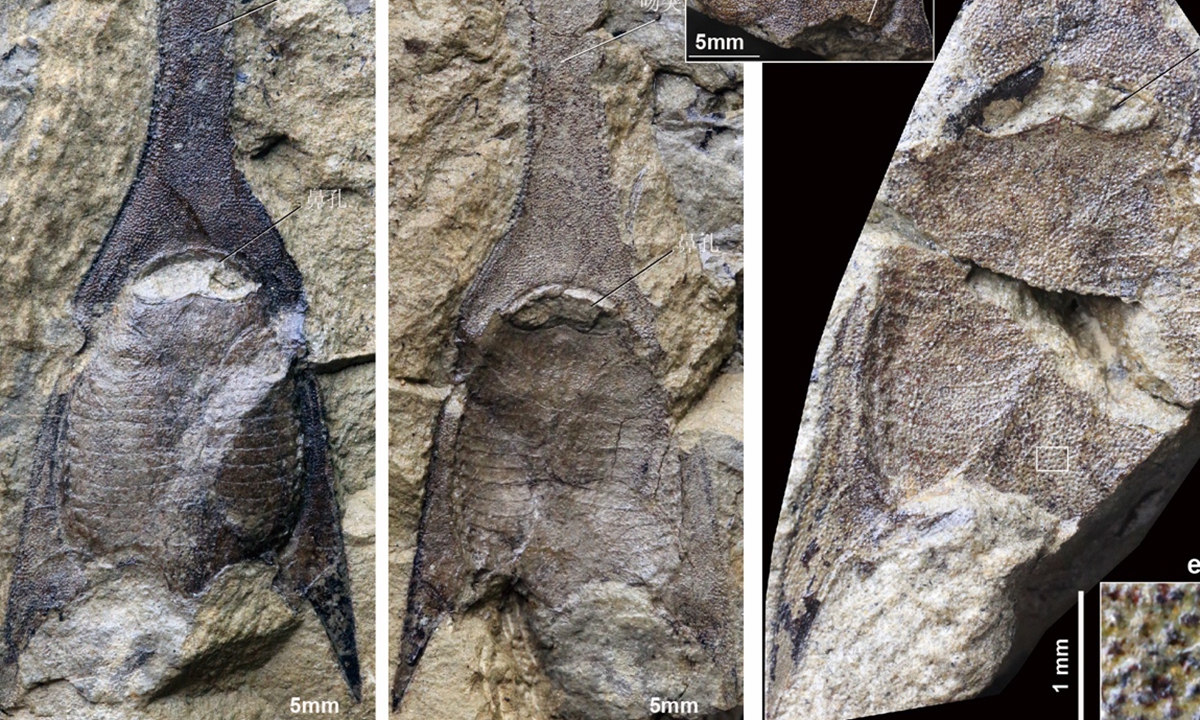ARTS / ART
400-million-year old trident-shaped fish fossil discovered in Yunnan Province

Fossil discovered in Qujing Photo: Sina Weibo
A 400-million-year old fossil of the ancient creature Sanqiaspis - a type of ancient fish with a distinctive trident look - was recently discovered in China's "ancient fish kingdom" of Qujing in Southwest China's Yunnan Province.The newly discovered ancient creature has a distinctive look in that its head has three prominent portions and the creature's mouth area is extremely extended so that it looks like a trident.
The Sanqiaspis is different from other armored ancient fish not only because of its special body shape, but also due to its diversity as there are three sub-types: the Changwen Sanqiaspis, Zhaotong Sanqiaspis and Vietnam Sanqiaspis.
This is the first time that this species has been discovered in Qujing. Before the new discovery, a Changwen Sanqiaspis was once found in Southwest China's Sichuan Province by China's respected "ostracoderm" researcher Liu Yuhai in 1975. Zhaotong Sanqiaspis was later discovered in Zhaotong in northern Yunnan Province. In 2009, the species was found in Vietnam by a French expert, which shows a broader picture of the ancient creatures' distribution and habitat.
"In China, it has been mainly found in the northern part of the South China plate. This time's discovery- in Qujing, further extends the distribution range of the creature in this area, also provides a clue for researchers to study the biogeographic issues related to this particular creature," Cheng, an insider in paleontology studies, told the Global Times on Wednesday.
The ancient fish is related to the creature group Galeaspida, which describes a type of jawless ostracoderm that is known for its heavily armored body and which are particularly found in Silurian and Devonian strata in China and Vietnam.
This is not the first time that such old aquatic creatures have been found in the city of Qujing, which has earned the nickname "ancient fish kingdom" due to the amount of such discoveries there. In 2017, another type of primitive fish believed to have lived more than 420 million years ago was also found in the area. The discovery was seen as evidence that in the Silurian period; Earth was stepping into the "Age of Fish."



